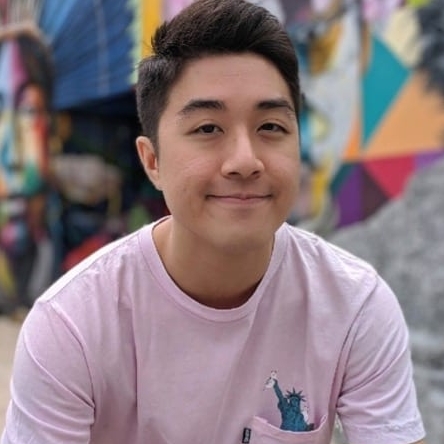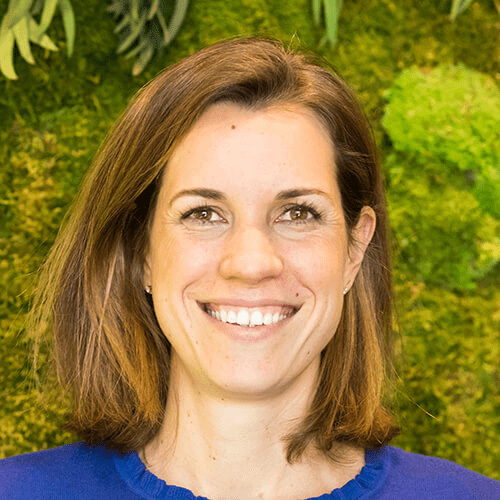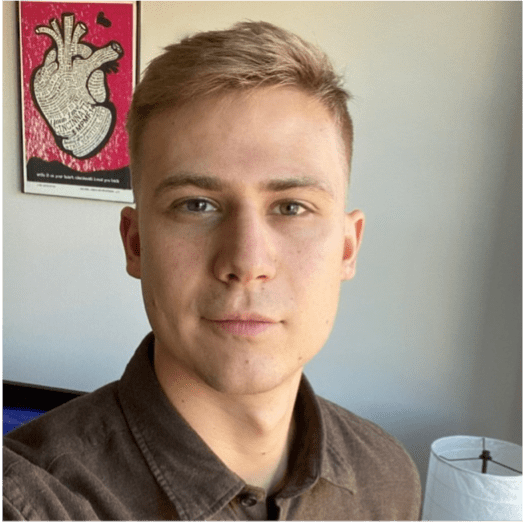How Buoy Health partnered with Fable to take a proactive approach to improving accessibility
Historically, as a busy startup with conflicting priorities, Buoy Health found itself responding to accessibility problems as they came up rather than taking a proactive approach. Now, with Fable, their team is able to research and plan for accessibility, with a goal of building stellar user experiences for everyone.


How Buoy Health partnered with Fable to take a proactive approach to improving accessibility
Historically, as a busy startup with conflicting priorities, Buoy Health found itself responding to accessibility problems as they came up rather than taking a proactive approach. Now, with Fable, their team is able to research and plan for accessibility, with a goal of building stellar user experiences for everyone.
Helping people navigate healthcare
Buoy Health is a healthcare navigation platform that helps people figure out health issues and find the right care. To date, they have raised over $60 million and have helped more than 10 million individuals make more informed decisions about their health.
During the COVID-19 pandemic alone, they’ve helped nearly 1 million Americans find care in their community, which has saved medical professionals nearly 30,000 hours of time.
Given the fast-moving and critical nature of their innovative work, they’re also committed to making their platform more accessible to as many people as possible, including seniors and people with disabilities.
Ramping up accessibility
Joel Wong is a senior product designer who leads the Accessibility team at Buoy. In 2020, Joel and the Buoy leadership team decided to make accessibility a top priority. Taking a crawl, walk, run approach, Joel first prioritized meeting Web Content Accessibility Guidelines (WCAG) guidelines, which included making quick but efficient updates to buttons and adding alternative text to images.
But Joel knew Buoy could – and needed to – take accessibility to the next level.
Joel knew Buoy could take a more proactive approach to ensuring its platform was accessible to the masses. By partnering with Fable, a leading accessibility testing platform powered by people with disabilities, Joel and his team were able to do just that.
“Fable provides an end-to-end test. We’ve shifted our approach to addressing accessibility at a more macro level, as opposed to fixing small, but mighty, issues sporadically.”

Joel Wong
Senior Product Designer at Buoy
“Fable provides an end-to-end test. We’ve shifted our approach to addressing accessibility at a more macro level, as opposed to fixing small, but mighty, issues sporadically.”

Joel Wong
Senior Product Designer at Buoy
What changed
Although healthcare as an industry took somewhat of a backseat in the digital revolution, today’s consumers expect healthcare to be in line with its predecessors. Point blank, consumers demand greater usability when engaging with technology – and the healthcare industry is no different.
After consulting with customers, Buoy knew it needed to prioritize efforts to increase its accessibility.
After partnering with Fable, Buoy’s approach to the accessibility process has changed. Whether it’s a UX researcher, a designer, or an engineer, the Buoy team is thinking about people with disabilities first. And using Fable allows Buoy to connect directly with assistive technology users as it strategically and proactively improves its accessibility functions.
Harry Kran-Annexstein, a developer with the team, leverages the Quality Assurance (QA) sessions on Fable. QA Sessions allow users to connect directly with an assistive technology user, who also has experience with web development and/or QA. “I’m an active participant in the technical QA sessions with Fable, which provides me with a real-time, insider experience as I work alongside assistive technology users engaging with Buoy’s platform.”
Over time, Harry realized with Fable, he was able to glean more actionable insights out of the experience vs. running quick automated tests.
“We’re able to now tweak our products based on real experiences we’ve witnessed in sessions with Fable, which allows us to directly impact the end-user experience and improve our accessibility standards.”
Becki Choi
Senior Product Designer at Buoy
“We’re able to now tweak our products based on real experiences we’ve witnessed in sessions with Fable, which allows us to directly impact the end-user experience and improve our accessibility standards.”
Becki Choi
Senior Product Designer at Buoy
The experience continues to expose team members to the myriad of diversity of assistive technology users. “Buoy’s approach to product development isn’t a one-fits-all approach – and that includes serving the needs of people with disabilities who use different types of assistive technologies,” said Becki Choi, senior product designer. “We’re able to now tweak our products based on real experiences we’ve witnessed in sessions with Fable, which allows us to directly impact the end-user experience and improve our accessibility standards.”
And it’s not only front-line team members who’ve noticed the shift and the focus on accessibility. Buoy leadership has also noticed positive changes.
Loi Sessions Goulet, PhD., Buoy’s head of user research, previously served in research leadership roles at Tripadvisor and Facebook.
“At other organizations, it was challenging to recruit high quality participants efficiently and effectively. Now at Buoy, we have the executives on board and are partnering with Fable to remove the painful logistics of recruiting participants, creating a much more streamlined process that’s resulted in success.”

Loi Sessions Goulet, PhD, Head of User Research at Buoy
Accessibility drives product quality
Buoy’s doubling down on accessibility efforts was only exacerbated with the 2020 COVID-19 pandemic. With a goal of helping as many Americans as possible, and with government partners including the Commonwealths of Massachusetts and Virginia, Buoy needed to ensure its technology was providing critical emergency assessments and immediate guidance. Wide-spread accessibility was crucial.
“Not only did our accessibility innovations prove to be a huge differentiator in a crowded market during the pandemic, but our new approach to designing products from an accessibility-first mindset gives Buoy a true competitive edge moving forward,” said Joel.
Harry noted, “Prioritizing building solutions that work with assistive technology means we’re building these solutions keeping ideas like semantic HTML and JavaScript heuristics top-of-mind. Making a product accessible drives overall product quality, from design, to engineering, to QA. At Buoy, we’re building quality solutions that not only serve our customers in the best way possible, but also boosts morale internally because we know we’re putting our best foot forward.”
“Making a product accessible drives overall product quality, from design, to engineering, to QA.”

Harry Kran-Annexstein
Software Engineer at Buoy
“Making a product accessible drives overall product quality, from design, to engineering, to QA.”

Harry Kran-Annexstein
Software Engineer at Buoy
Moving forward
Moving forward, Buoy has committed to prioritizing accessibility, and as the team continues to grow, the focus will be placed on decentralizing accessibility efforts across the company.
Moving accessibility from one coordinating team to individual product teams and business functions, allows Buoy to further embed accessibility into their culture and help set the precedent that accessibility is everyone’s responsibility.
“The barrier to entry was low with Fable – the platform was easy to use, and the team is genuinely kind. We look forward to our continued partnership,” said Joel.
Additional Information
Learn more about Fable’s work in digital accessibility. If you are an assistive technology user and are interested in remote work opportunities, check out our community page for more information.
